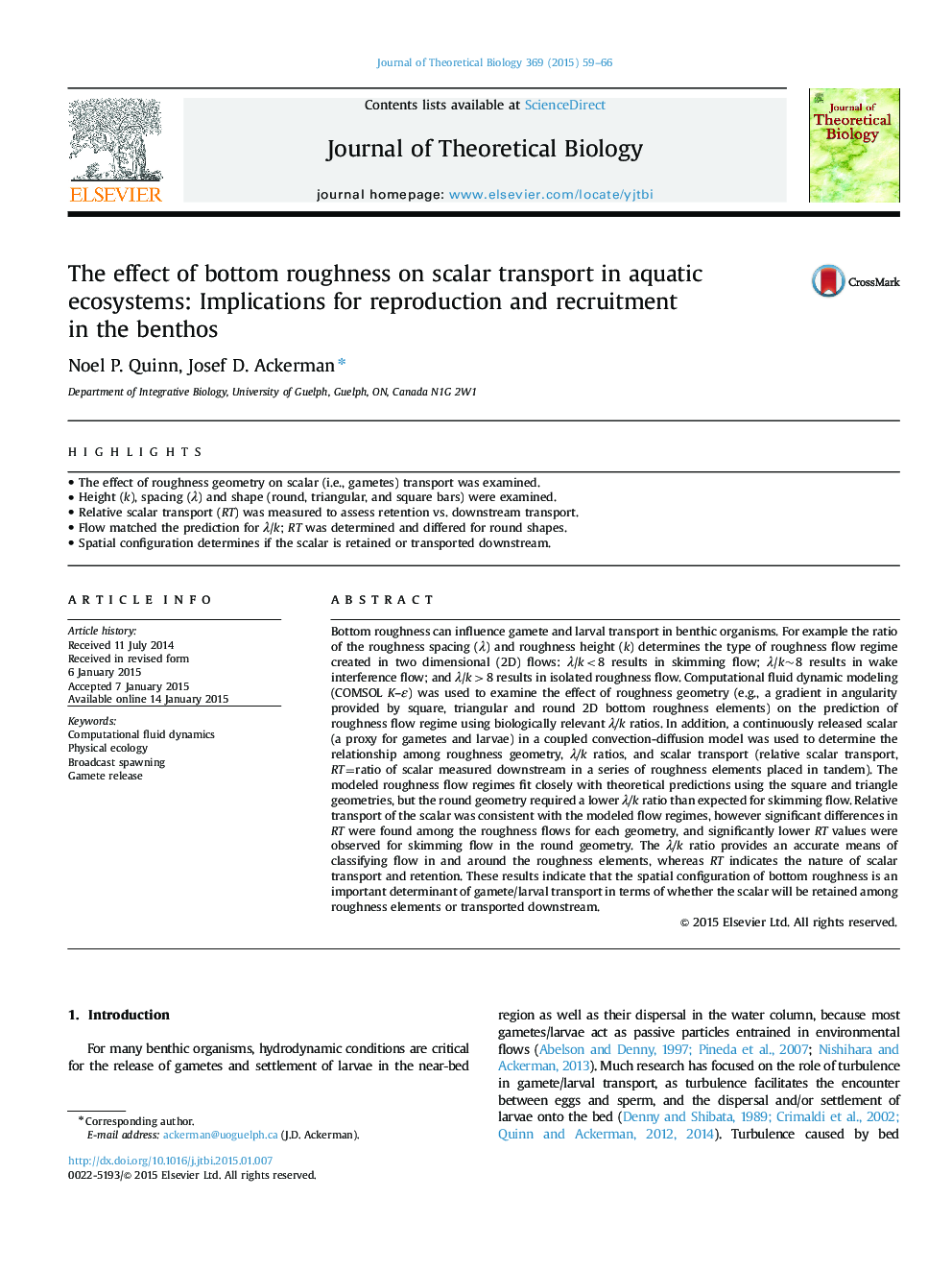| کد مقاله | کد نشریه | سال انتشار | مقاله انگلیسی | نسخه تمام متن |
|---|---|---|---|---|
| 6369958 | 1623841 | 2015 | 8 صفحه PDF | دانلود رایگان |
عنوان انگلیسی مقاله ISI
The effect of bottom roughness on scalar transport in aquatic ecosystems: Implications for reproduction and recruitment in the benthos
ترجمه فارسی عنوان
اثر زبری پایین در حمل و نقل اسکالر در اکوسیستم های آبی: پیامدهای تولید مثل و استخدام در بنتوز
دانلود مقاله + سفارش ترجمه
دانلود مقاله ISI انگلیسی
رایگان برای ایرانیان
کلمات کلیدی
دینامیک سیالات محاسباتی، بوم شناسی فیزیکی، تخم ریزی پخش، انتشار گیتار،
موضوعات مرتبط
علوم زیستی و بیوفناوری
علوم کشاورزی و بیولوژیک
علوم کشاورزی و بیولوژیک (عمومی)
چکیده انگلیسی
Bottom roughness can influence gamete and larval transport in benthic organisms. For example the ratio of the roughness spacing (λ) and roughness height (k) determines the type of roughness flow regime created in two dimensional (2D) flows: λ/k<8 results in skimming flow; λ/k~8 results in wake interference flow; and λ/k>8 results in isolated roughness flow. Computational fluid dynamic modeling (COMSOL K-ε) was used to examine the effect of roughness geometry (e.g., a gradient in angularity provided by square, triangular and round 2D bottom roughness elements) on the prediction of roughness flow regime using biologically relevant λ/k ratios. In addition, a continuously released scalar (a proxy for gametes and larvae) in a coupled convection-diffusion model was used to determine the relationship among roughness geometry, λ/k ratios, and scalar transport (relative scalar transport, RT=ratio of scalar measured downstream in a series of roughness elements placed in tandem). The modeled roughness flow regimes fit closely with theoretical predictions using the square and triangle geometries, but the round geometry required a lower λ/k ratio than expected for skimming flow. Relative transport of the scalar was consistent with the modeled flow regimes, however significant differences in RT were found among the roughness flows for each geometry, and significantly lower RT values were observed for skimming flow in the round geometry. The λ/k ratio provides an accurate means of classifying flow in and around the roughness elements, whereas RT indicates the nature of scalar transport and retention. These results indicate that the spatial configuration of bottom roughness is an important determinant of gamete/larval transport in terms of whether the scalar will be retained among roughness elements or transported downstream.
ناشر
Database: Elsevier - ScienceDirect (ساینس دایرکت)
Journal: Journal of Theoretical Biology - Volume 369, 21 March 2015, Pages 59-66
Journal: Journal of Theoretical Biology - Volume 369, 21 March 2015, Pages 59-66
نویسندگان
Noel P. Quinn, Josef D. Ackerman,
